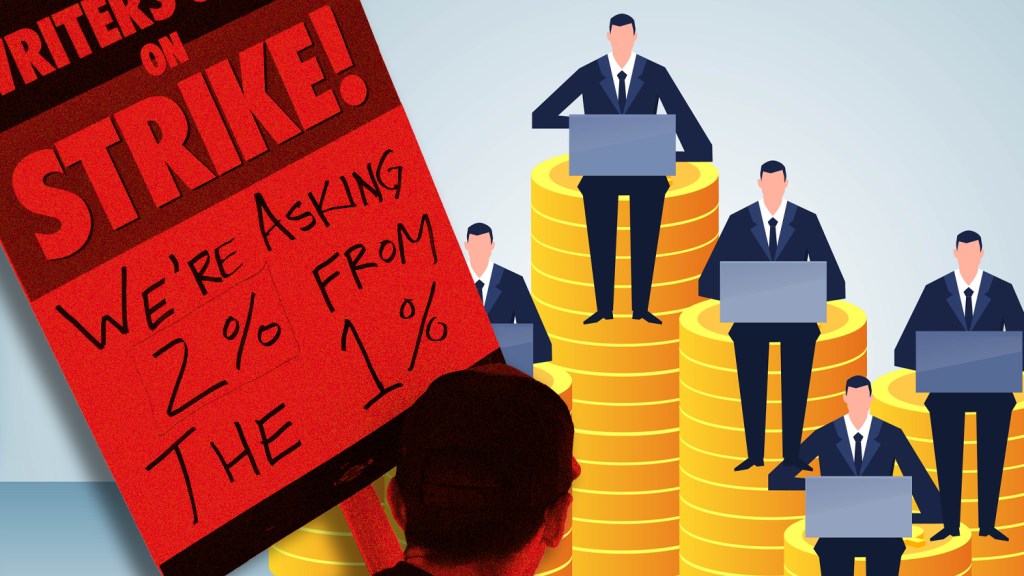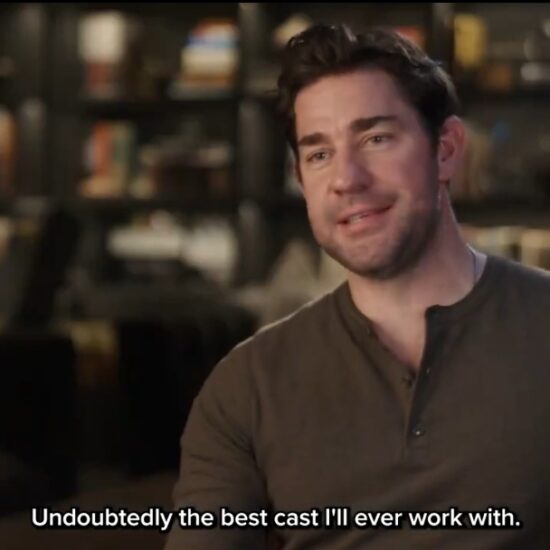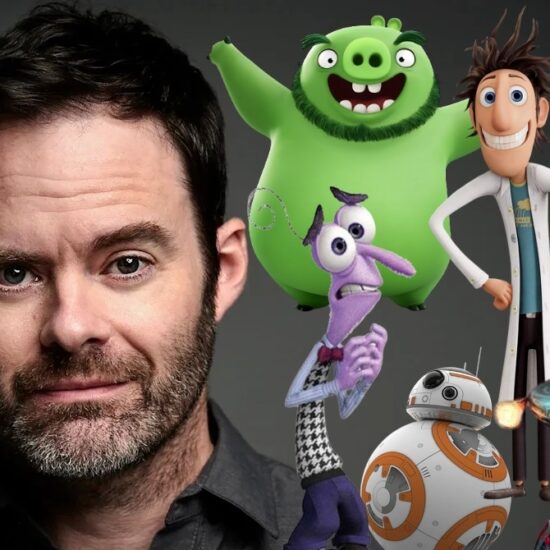
It’s been 87 days since the writers hit the picket lines and 14 days since the actors joined them, yet the divisions between the guilds and the studios remain as deep as ever.
One of the biggest fights that remains is how performers and writers should be compensated for work they create for streaming services.
“The question is: Are you or are you not willing to share some of the revenue you generate from actors, and also from writers, directors and crew, with them or not? The answer needs to be yes. It is not okay anymore for companies to just bring in huge amounts of revenue from people’s work and not share it with them,” SAG-AFTRA National Executive Director Duncan Crabtree-Ireland told Deadline.
Writers and actors do receive fixed residuals for their work on streaming services, but they are not tied directly to the success of a show, and even the most high-profile creatives have been known to receive pennies for some of their work.
But now, both guilds agree that a fixed residual is not enough to properly reflect their members’ contributions to the streaming services. In its proposal to the Alliance of Motion Picture and Television Producers, the WGA suggested a “viewership-based” residual model, in addition to the fixed residual already in place. That was rejected, according to the union. SAG-AFTRA took that suggestion one step further, proposing that performers receive a 2% share of the revenue generated from streaming content. That proposal was also flat-out rejected, according to the guild.
“We had this proposal on the table on day one of negotiations on June 7. To this very day, throughout that entire 35 days of bargaining and even since, the companies have never come back to us with any substantive response,” Crabtree-Ireland said. “Their answer was, ‘We aren’t interested in talking about it.’ So it’s going to be very hard to reach an agreement on something when the companies won’t even discuss it with you.”
The AMPTP tells a different story, saying that the 2% revenue share had come up “numerous times” and the studios expressed “fundamental objections” to the proposal. While they are willing to increase residuals made from streaming content, a blanket revenue share “creates a one-size-fits-all approach” that studio insiders say is “unworkable.”
It’s clear that both sides are far from an agreement on how to fairly compensate writers and actors on the backend. But the discourse has begged the question: Is a direct revenue share possible in the current streaming landscape and, if so, what could that look like?
Data Dogfight
Several experts stressed to Deadline that the central argument isn’t about whether there is infrastructure to support such a deal. It’s about getting the major studios, as well as the guilds, to agree on a measure of success that would make everyone happy. Which, it seems, might be an impossible exercise.
Any concession from the studios on this front would likely require some sort of data transparency. Thus far, streamers have kept all audience data close to the chest, occasionally self-reporting metrics as they see fit. Netflix is the only service that consistently self-reports viewership data, but does not provide full data transparency.
“Data transparency is related to power. This is a fight about power. Because right now, the streamers have power, and they don’t want to give it up,” David Offenberg, an associate professor of entertainment finance at Loyola Marymount University, told Deadline. “They have the data about how valuable things are and they’re exploiting it by not paying the creators as much as they’re worth for seasons two and three and four, because creators don’t know how much the show’s worth, because they don’t have the data.”
SAG-AFTRA has suggested using Parrot Analytics’ content valuation tool to determine the revenue generated by each piece of streaming content. The guild proposed that each quarter, producers would pay 2% of the quarterly “Revenue Contribution” for each series or film, and this would be divided pro rata among the principal cast “based on time and salary units or ratable distribution,” on top of the existing Streaming Revenue Sharing payment.
Unlike Nielsen or self-reported metrics from some of the studios, which use viewing time as their primary measurement, Parrot Analytics, a data analysis firm for the entertainment industry run by Wared Seger, which works with companies such as Sony, Lionsgate and Starz, uses other metrics such as Google searches and social media engagement. The goal is not to determine viewership but rather to understand the impact of a piece of content on a studio’s revenue. It uses quarterly earnings data as well as subscriptions and ad revenue to estimate that impact for each series or film on a platform.
The AMPTP, however, rejected this proposal, calling these metrics “opaque” and highlighted the fact that they are not available to anyone who doesn’t subscribe to Parrot. They also “lack any demonstrable link to the actual revenue received by the service in the form of new or retained subscribers.”
Crabtree-Ireland told Deadline that the guild thought Parrot’s approach “reflected a more broad-based and objective approach to evaluating that without the kind of insight data that the companies have been unwilling to share so far.”
Building A Metric
When it comes to success on streaming, there are two types of series or films — those that attract subscribers and those that retain them. For each title, a studio gathers a whole host of data including global/U.S. hours viewed, number of unique accounts that viewed a title, and completion rate for each account. They also seek to determine how much engagement a show drives and to what degree it was successful at reducing churn.
While all of these could theoretically be used to determine the success of a show monetarily, they would likely all yield a different answer. Each studio is likely to value one more than the other, which would hinder any agreement on a single metric.
It’s not just about getting the studios to agree, either. It’s also about finding a metric with which the guilds would be satisfied. Because data, while undeniable, can be used to tell any story.
“The challenge with the data is I don’t know which story you want to be told. … Do you want to know that you didn’t make a difference, that the algorithm was the difference maker?” Andrew Rosen, a former Viacom executive and the founder of streaming newsletter PARQOR, told Deadline. “If actors are open to being quantified for how they help with engagement and churn, if that’s true at all, that’s the conversation to have.”
That’s a “different business logic” than simply identifying which shows are hits and which are not, Rosen said.
For what it’s worth, Crabtree-Ireland has repeatedly stressed that SAG-AFTRA is willing to at least discuss any metric the AMPTP is willing put forth. The guild simply wants its members to be fairly compensated for their work in streaming.
Ostensibly, the guild is harking to the days of broadcast television, where the creators and casts of shows such as Friends, Seinfeld, Everybody Loves Raymond and Two and a Half Men would make tens of millions of dollars a year in residuals thanks to reruns and syndication (and, ironically, streaming). In fact, the last time writers and actors were on strike together, in 1960, residuals were a key part of those negotiations and led to a long-term payment structure that allowed creatives to share in a show’s success.
“What this is really about is recognizing how streaming has become such a central part of the platform for our members’ work, and these streaming platforms have been built on our members’ voices. The fact is, there’s not a percentage of that revenue that the streaming platforms are gaining that is shared with us or with directors or writers or any other creatives in that form,” Crabtree-Ireland added. “We’re not wedded to that aspect of the proposal. We’re wedded to the concept of — you’re bringing in a bunch of money [and] our members are the reason why it’s coming in and they ought to have at least a tiny little piece of that pie shared with them.”
Regardless of the metric, it will need to be translated into a hard dollar amount — which is where things get even more tricky.
“That is such a can of worms that [the studios and actors] don’t even want to open. I get [the actors’] motivation, but to do that math in a way that makes everybody happy is absolutely impossible. That would cause so much infighting within any union, because you have to make assumptions,” Offenberg said. “You have to build mathematical models that are estimating — not determining, just estimating — the amount of revenue each streaming show makes… there’s no way to make that work in a way that everybody thinks is fair.”
To be clear, the infrastructure is there to support a revenue share, especially with the introduction of ad tiers, because advertisers need audience data in order to be able to justify their ad spend.
“It’s all in a paradigm that is broadly executed on the internet today, and the metrics and the underlying measurement capability does exist to support that kind of a deal,” said Jason Fairchild, co-founder and CEO of advertising platform tvScientific. “It’s a new concept for the studios. It’s not a new concept for content syndication.”
While the studios have bristled at the idea of using third-party data to try to quantify success, Fairchild argues that “if the streaming service, or whoever it is, is grading their own homework, that’s going to lead to some friction.”
“If you have a third party to validate, it’s a solution. That’s time tested across multiple industries,” he said. “It’s not an outrageous thought to have a third party verify.”
The question still remains how much to share with the creatives. While SAG-AFTRA has proposed 2%, experts said that any number will likely ruffle feathers, since streaming has drastically changed the way content is valued and will continue to do so as the industry leans more towards the medium.
“The problem is that the nature of the streaming model really makes it difficult to estimate what actors are entitled to from a show or a movie,” Rosen said. “The value of content has been changed so radically by this medium that it’s really unfortunate and sad to watch. An actor’s output is just very different and is valued very differently, both by the medium in which the content is distributed and by the audiences.”
The “Dirty Secret”
For Rosen, this key fight in the contract negotiations has illuminated an essential truth about streaming. When Netflix accelerated the race away from linear television, every studio followed suit in an attempt to keep up with the times. But the shift was too fast, and the studios’ business models couldn’t keep up. With the introduction of Apple and Amazon in the streaming wars, it puts the legacy studios like Disney, Warner Bros Discovery and NBCUniversal at even more of a disadvantage.
“The dirty secret of streaming is nobody’s profitable, except for Netflix,” he said. “The problem with the guilds’ asks is that they’re saying, ‘Hey, you unprofitable business, one day, you’re going to be profitable. And you should share profits with us.’ Studios are saying, ‘Well, we’re unprofitable and based on what you’re asking, it’s going to be harder to become profitable. The less likely it is we’re going to become profitable, the less likely it is we want to stay in this business.’”
Although, it seems the studios are betting on streaming more and more by the day. If anything is clear, it’s that this new era will continue to be less lucrative for all involved.
“None of these businesses are going to look like what linear used to look like. None of these businesses are going to deliver the types of revenue that syndication used to deliver to directors and actors,” Rosen said. “The difficult question for Hollywood right now is whether the leadership that’s in place, the guys who are really competent in managing studios and linear networks and theme parks, are the right people to solve that problem. I think that the uncomfortable truth that’s emerging from this standoff between the Screen Actors Guild, the Writers Guild and the studios is that they may not be.”













